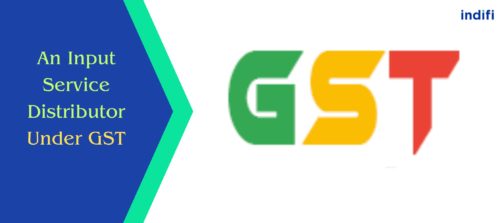
Managing tax credits effectively becomes vital when managing a business with many branches or units scattered around the nation. Here is where the Input Service Distributor (ISD) mechanism under GST comes into play. This blog post will enable you to understand what exactly is an ISD in GST, and how does it function?
What is Input Service Distributor (ISD)?
An input service distributor refers to a taxpayer who gathers invoices for input services utilized across many branches and distributes the accessible tax credits among them. Though they might be situated in separate states or union territories, these branches must run under the same PAN. It guarantees that all branches distribute the tax credits uniformly, simplifying the application and preventing later difficulties.
Also Read – Old Vs New Income Tax Slabs Which One Is Best For Businesses?
Suppose you run a company with branches in Delhi, Chennai, Bangalore, and a central office in Mumbai. If the head office pays for an IT service used by all the branches, the tax paid on that service must be distributed among the branches. In this situation, the Mumbai office is the ISD and distributes tax credits to the branches.
The ISD GST process underwent a noteworthy change presented at the 50th GST Council Meeting. The upgrade lets companies avoid the required ISD procedure for shared standard services acquired from outside vendors for different branches. Still, this will only be relevant until the CBIC issues an official alert.
Also Read – What is OIDAR Under GST?
Conditions for Being an ISD
You have to satisfy specific requirements to be an ISD under GST:
- Business Nature: An ISD must be a head office or any office handling invoicing for services used by its many branches.
- Branch Link: The branches getting the tax credit benefits should be registered under the same PAN.
- Invoice Issuance: Tax credits are distributed by the ISD via invoices to its branches, therefore guaranteeing the correct proportion of the input tax credit.
Also Read – What is GST Compliance?
ISD Registration in GST
Registering as an ISD GST would help your company handle tax credits more easily if it deals with standard input services across many branches. You must register especially as an ISD, along with your regular GST registration. Here’s how to do it:
- REG-01 Form: As you register, choose the ISD option under serial number 14 of the GST REG-01 form.
- Separate Registration: If you are already registered for GST as an ordinary taxpayer, remember that you will require a separate ISD registration under GST procedure.
Credit Distribution Rules for ISD
Understand how an ISD assigns the input tax credits to many branches.
- Direct Attribution: If a service is directly related to one branch, the ISD can assign input tax credit to that branch alone. For example, if the headquarters purchases a service exclusively for the Delhi branch, the credit will be allocated just to that branch.
- Standard Input Services: The tax credit has to be given according to the pro-rata turnover of each branch if a service benefits more than one. This guarantees equitable distribution of credits depending on the income of every unit.
Assume your ISD is in Mumbai, and you have four branches all around: Delhi, Chennai, Bangalore, and Kolkata. The credit should be allocated based on the branch turnover ratio if you buy an input service that is utilized across all four branches.
The Role of ISD Invoicing
To ensure accurate and transparent credit distribution, the ISD must issue its invoices. Unlike conventional invoices, ISD invoices are official documentation used to distribute tax credits across numerous branches.
- ISD Invoices must include specifics like the GSTIN of the receiving branch and credit distribution amount.
- These invoices enable branches to claim the appropriate Input Tax Credit (ITC) in their GST returns.
Also Read – What is GST Return?
Returning Files as an ISD
The ISD also has obligations for returns filings. Rule 65 of the CGST Rules mandates that an ISD submit monthly returns using GSTR-6. It operates like this:
- Due Date: You must submit your ISD return 13 days after the end of every month.
- Content of Returns: The return shall include all the ISD invoices generated throughout the month and the matching credit distributions.
- Viewing credit: The distributed credits will show on the GSTR-2A of the corresponding branches. Their GSTR-3B return will let them claim the credit.
Furthermore, it is noteworthy that filing an annual return (GSTR-9) is not specific to ISD. Still, you must ensure the tax credits are allocated accurately every month.
Also Read – What Are All Different Types Of GST?
Why Register as an ISD?
So, why bother registering as an ISD? The following are some main advantages:
- Centralized Credit Distribution: You can manage tax credits from a central point, allocating them to the right branches more easily.
- Efficiency: It helps streamline the process, ensuring every branch gets its share of input tax credits.
- Compliance: By registering as an ISD, you ensure that your business stays compliant with GST laws and avoids penalties for incorrect credit distribution.
Wrapping Up
Controlling the input service distributor in GST mechanism will help companies with many branches to better handle tax credits. Registering as a GST ISD will help to guarantee that each branch receives its fair share, simplify credit allocation, and maintain GST compliance.
While managing ISD may seem complex, it is entirely manageable with the right procedures in place. You can confidently navigate the ISD process by filing your GSTR-6 on time and staying updated with GST changes, ensuring correct credit distribution.
FAQs
- In which conditions ISD is not applicable?
Input Service Distribution (ISD) for GST is not applicable when a company does not have several branches or unique entities receiving input services. Furthermore, it cannot be utilized for services consumed entirely in the same area, or if the recipient is not GST registered.
- How can ISD be recovered?
An inaccurate distribution occurs when an Input Service Distributor (ISD) distributes GST credit to recipients in an inappropriate ratio or over what is permitted. The extra credit will be recovered from the recipient(s) with interest, following the “Demand and Recovery” rules under the GST Act.
- What is a supplier of services under GST?
The phrase “supplier” refers to an individual or entity that provides goods, services, or both. It also includes a representative acting on behalf of such a provider.



